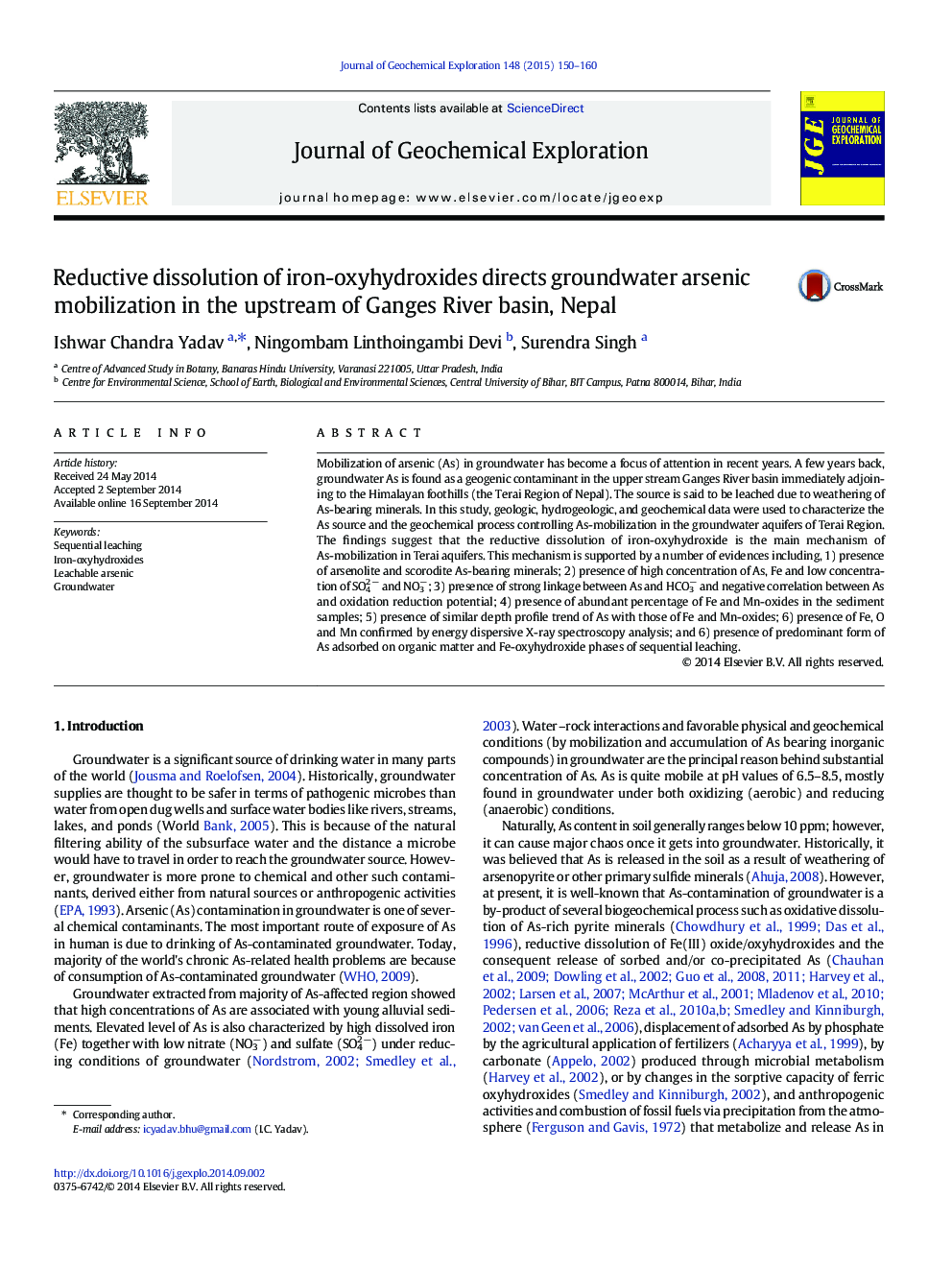| کد مقاله | کد نشریه | سال انتشار | مقاله انگلیسی | نسخه تمام متن |
|---|---|---|---|---|
| 4457320 | 1620911 | 2015 | 11 صفحه PDF | دانلود رایگان |
• High content of Fe and low content of Mn in groundwater indicate reducing condition.
• Strong linkage between As and HCO3− suggests the prevalence of reducing condition.
• Depth profile of As exhibited similar distribution pattern with Fe and Mn-oxides.
• Arsenic bearing minerals such as arsenolite and scorodite were mostly dominant.
• As was more adsorbed on Fe-oxyhydroxide, sulfate/silicate and organic matter phase.
Mobilization of arsenic (As) in groundwater has become a focus of attention in recent years. A few years back, groundwater As is found as a geogenic contaminant in the upper stream Ganges River basin immediately adjoining to the Himalayan foothills (the Terai Region of Nepal). The source is said to be leached due to weathering of As-bearing minerals. In this study, geologic, hydrogeologic, and geochemical data were used to characterize the As source and the geochemical process controlling As-mobilization in the groundwater aquifers of Terai Region. The findings suggest that the reductive dissolution of iron-oxyhydroxide is the main mechanism of As-mobilization in Terai aquifers. This mechanism is supported by a number of evidences including, 1) presence of arsenolite and scorodite As-bearing minerals; 2) presence of high concentration of As, Fe and low concentration of SO42 − and NO3−; 3) presence of strong linkage between As and HCO3− and negative correlation between As and oxidation reduction potential; 4) presence of abundant percentage of Fe and Mn-oxides in the sediment samples; 5) presence of similar depth profile trend of As with those of Fe and Mn-oxides; 6) presence of Fe, O and Mn confirmed by energy dispersive X-ray spectroscopy analysis; and 6) presence of predominant form of As adsorbed on organic matter and Fe-oxyhydroxide phases of sequential leaching.
Figure optionsDownload as PowerPoint slide
Journal: Journal of Geochemical Exploration - Volume 148, January 2015, Pages 150–160
